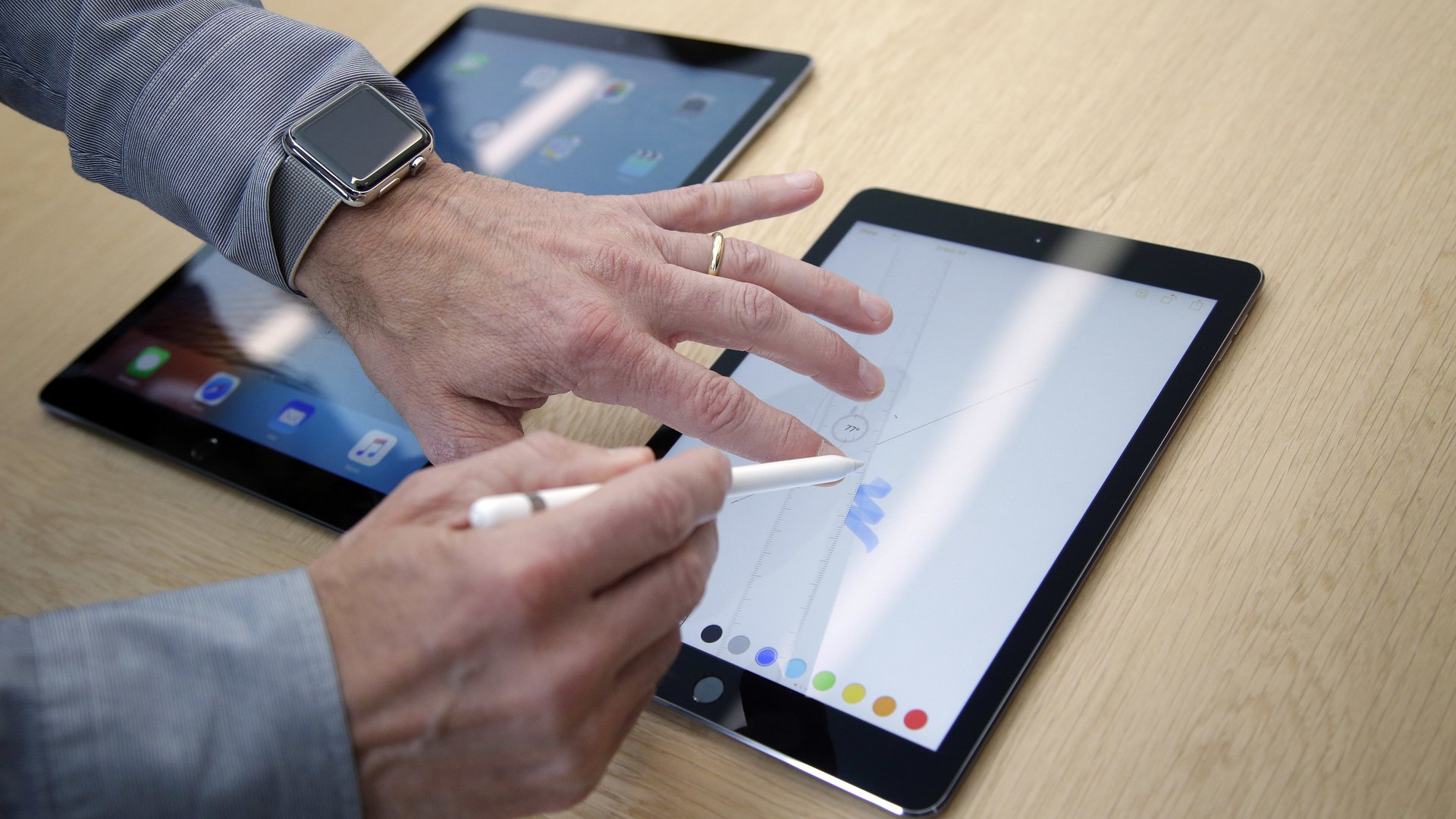Apple really wants you to replace your laptop with an iPad
For those still mourning the loss of the MacBook Air, Apple’s recent advertising push, which tries to convince the world that the iPad Pro is a full replacement for a computer, has likely not been well-received. Over 2015 and 2016, Apple refreshed its laptop line, introducing a 12-inch MacBook, and upgraded MacBook Pros, seemingly leaving the Air, which has not even seen a hardware refresh in two years, for dead.


For those still mourning the loss of the MacBook Air, Apple’s recent advertising push, which tries to convince the world that the iPad Pro is a full replacement for a computer, has likely not been well-received. Over 2015 and 2016, Apple refreshed its laptop line, introducing a 12-inch MacBook, and upgraded MacBook Pros, seemingly leaving the Air, which has not even seen a hardware refresh in two years, for dead.
It’s not clear whether the Air will be revived, but Apple is currently pushing users to either shell out at least $1,300 for a new MacBook, or $600 for the base-model iPad Pro (which really jumps to $850 when you add in its keyboard cover and stylus) for its latest hardware. Although the iPad and MacBook lines are still kept separate on the company’s website, it refers to the iPad Pro as “Super. Computer.” in advertising on its homepage. There has been no similar push for its new Mac laptops.
Apple’s recent marketing campaign for the iPad Pro revolves around answering “real problems” from computer users: It highlights real tweets with complaints people have had about their computers, and responds that an iPad Pro would not have similar problems. It sets the iPad Pro up as Apple’s most approachable, and useful, computer for the average person—people who just want to print a single piece of paper, who don’t want to lug heavy laptops to class, or who want to declutter their lives.
Whether an iPad Pro can really handle the same everyday tasks as easily as a laptop is debatable, but it’s where Apple seems to think the future of the iPad lies. Revenue from the iPad has been trending downward, and what was once Apple’s second-largest revenue segment, pulling in over $11 billion in a single quarter in 2013, is now trailing behind the iPhone, Apple’s services business, and even the Mac. Given that the iPhone has been getting larger in recent years (and there are rumors that there will be an even bigger 5.8 inch-screen phone this year), it’s likely that fewer people will be inclined to carry a smaller iPad with them as well. The iPad Pro, with its stylus, keyboard, and more powerful processor, is more differentiated from iPhones than other iPad models, so it makes sense that Apple would try to push it as a second device to customers. And it’s likely that we’ll hear more about its future in the coming weeks.
Apple often has a product launch event in March or April, and reports suggest that one is coming at the end of this month. Much like the rumors of there being three iPhones released this year, Apple is reportedly planning to release three new iPad Pro models—in the existing 9.7 and 12-inch sizes, and a new 10.5-inch size, according to MacRumors—all with slimmer profiles than the existing models. There’s scant additional information out there, although there are rumors that Apple will also take this time to announce an updated iPhone SE—its smaller iPhone, based on the design of the iPhone 5. Apple declined to comment on its launch plans.
Typically, Apple sends out invites to the media roughly 10-12 days before an event, meaning that even if invites went out today, the event would likely not be before March 24. Or Apple could upend its playbook, call a snap press event, and send everyone into a tizzy as they rush to cover whatever new devices the company show offs. Or there could be no event.
This year is expected to be a bumper year for the company, which is celebrating the tenth anniversary of the iPhone, and it’s entirely possible that it won’t stick to the usual script it’s followed in recent years. But regardless of what sleek new aluminum products Apple releases this year, it seems increasingly likely that the future of casual computing, at least as far as Apple is concerned, looks a lot more like a tablet with a keyboard attached, than a traditional laptop. And Apple isn’t alone—Microsoft has been running with its Surface tablets longer than Apple has had the iPad Pro, and Samsung recently announced the Galaxy Tab S3—both of which have similar keyboard-and-stylus add-ons.
For Apple users who actually use laptops as intended—as computers that can sit on your lap—it seems the only options in the future will be machines that cost over $1,000. At least they come in some nice metallic shades, though.